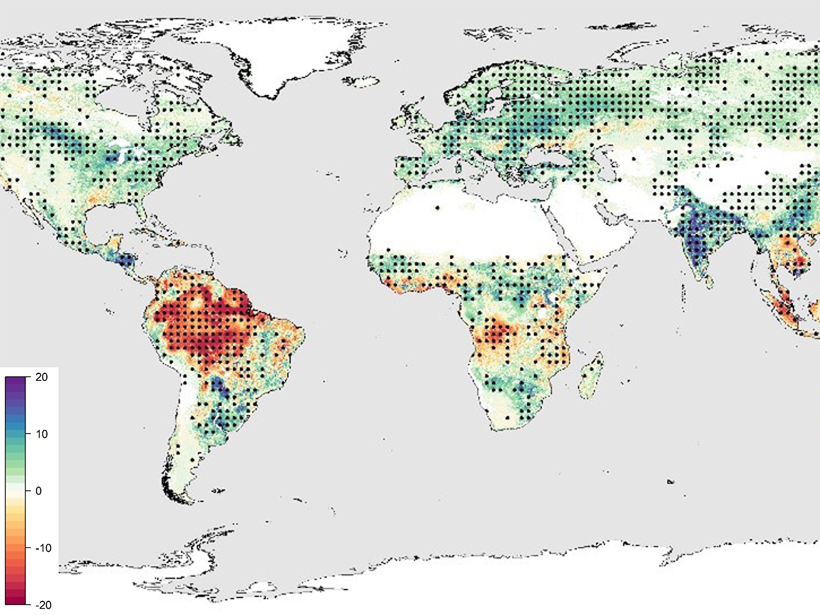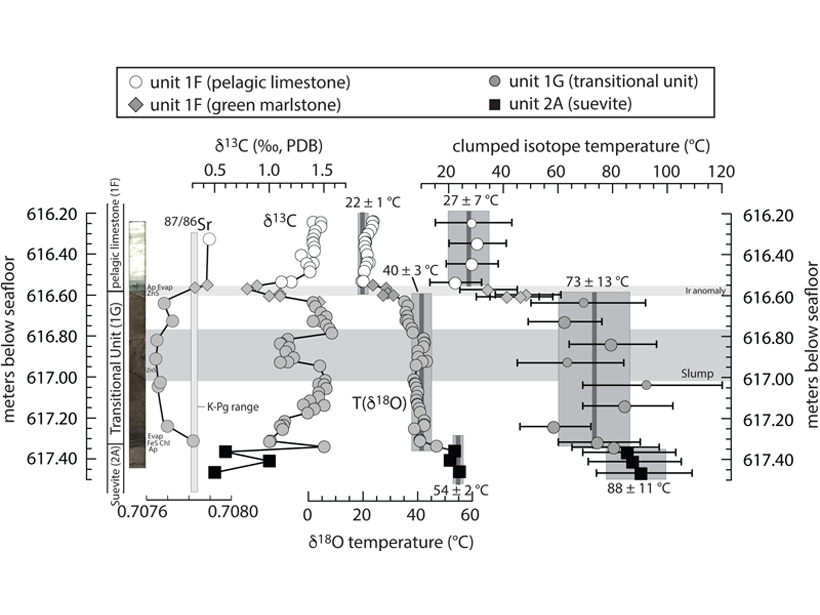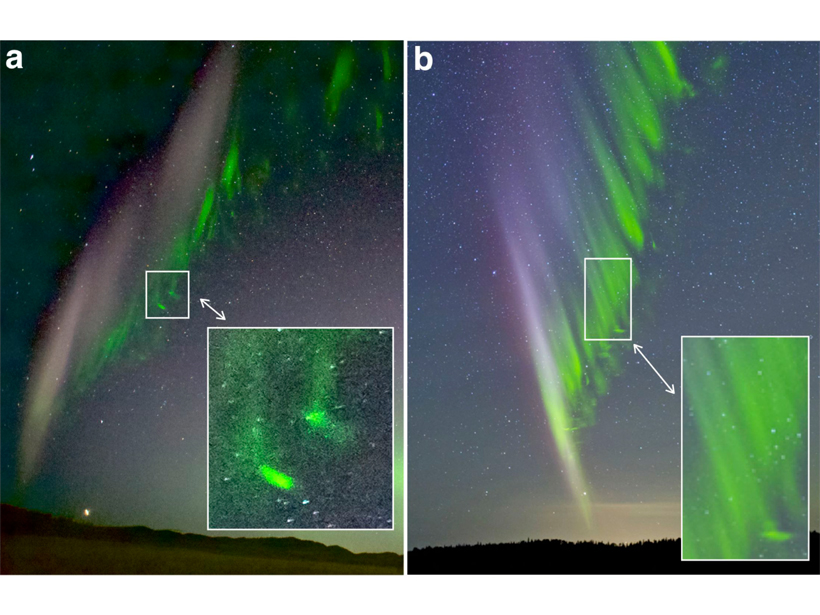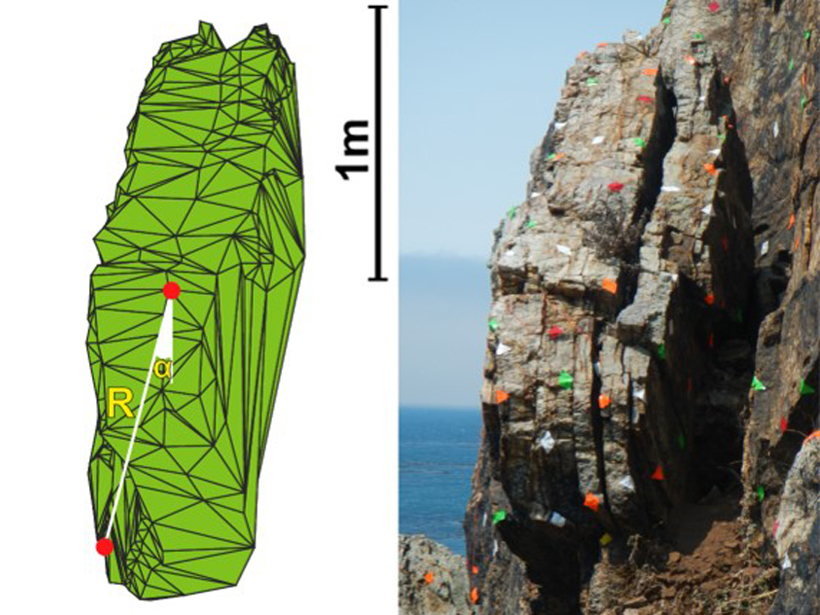Despite increased photosynthetic activity at northern latitudes in recent decades, plant productivity in tropical zones suffers because of water limitations.
AGU Advances
High Climatic Response of High-Latitude Forests
The seasonal amplitude of atmospheric CO2 is increasing, partly due to boreal forest responses to warming. Photosynthesis and expansion of boreal forests are shown here to be temperature-limited.
Life in the Chicxulub Crater Years After It Was Formed
While the seas were still churning from the impact and the seawater temperatures were high due to the hydrothermal activity, life was reestablishing itself inside the crater.
Citizen Scientists Observe Mysterious Green Streaks Below STEVE
Citizen scientists provided images of sub-auroral STEVE (Strong Thermal Emission Velocity Enhancements) showing fine-scale green features with narrow streaks propagating poleward toward STEVE.
Groove is in the Fault
Rock sliding experiments on meter scales show groove patterns which are controlled by normal stress. This may help better understand earthquake source conditions from exhumed faults.
Frequency Dependent Plates
Rocks stretch, break, and flow, depending on how and under which conditions they are loaded. A new formulation to better capture Earth’s rheology is explored in the context of plate thickness.
More Clustered Clouds Amplify Tropical Rainfall Extremes
Both satellite observations and model simulations reveal that more aggregated convection amplifies the increase in extreme rainfall events on a year-to-year basis.
Earthquake Hazard Hanging in the Balance
Earthquake hazard calculations for California’s coast are refined with a view of precariously balanced rocks that would have fallen if the largest predicted shaking happened in the past 20,000 years.
Ensemble Modeling of Coronal Mass Ejection Arrival at 1 AU
Heliospheric imaging data can be used in ensemble modeling of CME arrival time at Earth to improve space weather forecasts, treating the solar wind as a 1-D incompressible hydrodynamic flow.
What the Upper Ocean Looks Like During a Hurricane and Why It Matters
High-resolution measurements reveal the structure of the upper ocean under a hurricane and its feedback on storm intensity.










